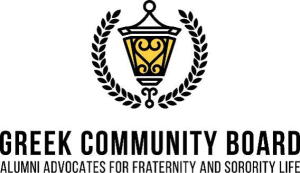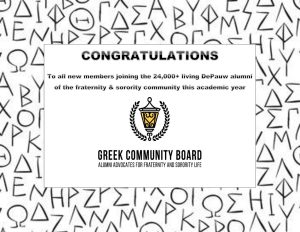DePauw University’s freshman retention rate ranks above average compared to liberal arts colleges and universities nationally and within the North Coast Athletic Conference (NCAC).
Retention rates signify how content students are with their academic and social experience at school due to the statistic signifying the percentage of students that choose to come back for another year. Universities typically look at freshman retention rates, and the national average freshman retention rate is about 70 percent at private colleges and universities.
The freshman retention rate for the class of 2019 was 92 percent while the retention rates for the class of 2018 and class of 2017 were 94 percent and 93 percent, respectively.
“On average, we at DePauw can expect about a 92 percent retention rate from first-year to sophomore year, but we still will lost students then in the sophomore year,” Cara Setchell, the first-year class dean, said.
Nationally, according to U.S. News and and World Report, DePauw ranks number 54 in terms of freshman retention rate among liberal arts colleges. The liberal arts colleges with the highest freshman retention rates are Amherst College, Harvey Mudd College, Pomona College and the United States Naval Academy.
Compared to schools within the NCAC, DePauw ranks third, behind Kenyon College and Oberlin University with freshman retention rates of 95 percent and 93 percent, respectively. Schools such as Wittenberg have a retention rate of 80 percent. The freshman retention rate for Wabash College is 89 percent.
Although DePauw has a comparatively high retention rate, first-year students still transfer from the University for individual reasons. “From my vantage point, it would be easy if there was this one thing [for why students transfer] because then DePauw could make a concerted effort to work on that, but students really do leave for all kinds of reasons,” said Setchell.
Setchell has found that the most common reasons students choose to leave DePauw are not even in the student’s control. “One of the more common reasons students withdraw, and many of the time they come back, are for health reasons, so if students are having medical reasons that are impacting their ability to be a full-time student,” said Setchell. Other reasons include students’ realization that they would prefer to be closer to home, financial difficulties or school size.
First-year Kaitlyn Root ultimately decided to transfer from DePauw because of the services the University offers through the Hubbard Center and her future career goal. “I decided to transfer, not because I don’t love DePauw because I really love DePauw, but I want to go to Tulane for law school, and I want to be a senator in Louisiana. So, I’m like ‘why am I not where I plan to spend the rest of my life?’,” Root said.
Once students decide to transfer, they complete an exit interview to talk about the positive and negative aspects of their DePauw experience. “We really talk those aspects out so a student can fully articulate for themselves why not being at DePauw is in their best interest and why somewhere else can meet their needs,” said Setchell. Topics discussed in an exit interview include courses, relationships with professors and a student’s faculty advisor, life outside of the classroom as well as anything DePauw could have done to improve their experience.
At the end of the year, the exit interviews will be assessed for common themes and patterns and shared with the admissions staff. “We do it intentionally to help the University understand how we can just be better and how we can continue to improve the student experience,” said Setchell.
While some students may be unsatisfied with their overall DePauw experience, other students are excited to transfer into the University. This semester, 12 students transferred to DePauw. 10 students were freshman while two were sophomores. Ultimately, students transfer to DePauw for a multitude of reasons but a few common reasons appear to athletics and second hand experience from friends that are current students, according to Setchell.
Sophomore Kelsey Whybrew transferred to DePauw at the beginning of the academic year from Thomas More College in Kentucky. “I chose to transfer because, although it was academically fine (Thomas More), I was not socially having any fun. There was not any activities on campus and only 500 people live on campus. So, I visited here a few times and loved it, and the people here were really nice. So I am really happy now,” Whybrew said.
The freshman retention rate for the class of 2020 will be determined the next academic year but Setchell anticipates around a 92 percent retention rate.


